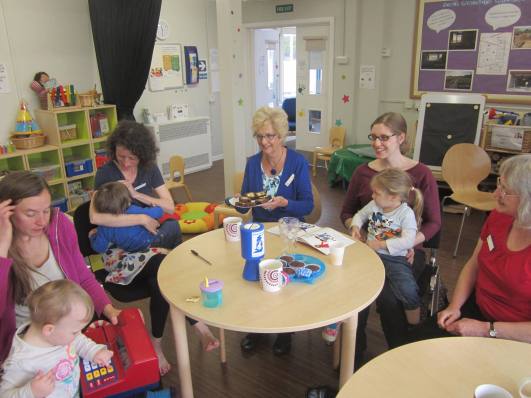74 percent of mothers initiated breastfeeding
44 percent of mothers were still breastfeeding at 6–8 weeks– Public Health Outcomes Framework (England) 2014/15
90 percent of women who stop breastfeeding in the first six weeks report giving up before they wanted to
– David Bull, Executive Director UNICEF UK
Most mothers in the UK want to breastfeed, yet most mothers stop breastfeeding before they want to. Why?
The fact is that while breastfeeding is natural, mothers need skilled support to be able to breastfeed. Yet many of the health professionals who work with mothers and babies do not have the knowledge or skills to help them.
Indicator 5 of the WBTi examines how well healthcare systems support breastfeeding. It looks in detail at the training of all health professionals who interact with mothers and babies – midwives, health visitors, GPs, paediatricians, lactation consultants and others – both before and after they qualify in their profession. You can see the full education checklist here.
It also asks whether health workers understand their responsibilities under the International Code of Marketing of Breast-milk Substitutes, and whether mothers and babies are able to stay together when one of them is sick.
Support for mothers comes from many sources, not just health professionals. It can come from family, friends, the community at large, and particularly breastfeeding peer-support groups. In the UK, these are run by organisations like the Association of Breastfeeding Mothers, Breastfeeding Network, La Leche League, NCT, as well as by the NHS itself. Mothers who have breastfed their own babies – and who have received training to provide breastfeeding support – are able to provide valuable help to new mothers.
In the UK, just 1 percent of babies are exclusively breastfed for the recommended six months. Common reasons that mothers give for stopping breastfeeding include:
- finding breastfeeding painful
- concerns about their milk supply
- conflicting advice from health professionals
- lack of support

Peer supporters are “informed friends” who can help mothers understand what’s normal and help with many common breastfeeding concerns. They offer a compassionate and empathetic ear to new mothers.
This importance of this community-level support is recognised in Indicator 6 of the WBTi, which looks in detail at access to skilled mother support and community outreach. Good peer-support programmes can increase the length of time that mothers exclusively breastfeed their babies. In other words, they can help mothers who want to breastfeed to carry on for as long they choose.


